
With the advent of modern chemistry, many new chemicals are being invented, which are playing a significant role in modern construction industry. Construction chemicals are the significant part of chemical industry and with their introduction, the matrices of construction industry have changed drastically. These chemicals are used to enhance the quality of building materials in the construction projects to make the project sustainable, durable and economical. In this article we are providing you brief information on construction chemicals and their types which are used in construction industry.
What are the Construction Chemicals?
Construction chemicals, as the name suggests are chemicals used in construction activities. These chemicals have an extensive functional scope in the field of construction. They can be used in ongoing construction projects for speeding up the work or in new construction ventures or for repairing and retrofitting existing buildings or for enhancing durability and providing strength to the structures. Construction chemicals are used along with various building materials at the construction site to improve workability, to increase efficiency, add effectiveness and to protect the part of any structure, or to accelerate the speed of construction work.
Construction chemicals come with a range of products, varying from admixtures to flooring chemicals, grouts, sealants, waterproofing chemicals as well as chemicals for repair and maintenance of structures. Talking about polymers, they are the vital group of raw materials and are popular in every construction chemical formulation. According to ‘M.S. Shetty’[02] (Author of Construction Technology), the types of Construction Chemicals are:
Popular Construction Chemicals
01. Admixtures
- Plasticizers
- Superplasticizers
- Retarders and Retarding Plasticizers
- Accelerators and Accelerating Plasticizers
- Air-entraining Admixtures
- Pozzolanic or Mineral Admixtures
- Damp-proofing and Waterproofing Admixtures
- Gas forming Admixtures
- Air-detraining Admixtures
- Alkali-aggregate Expansion Inhibiting Admixtures
- Workability Admixtures
- Grouting Admixtures
- Corrosion Inhibiting Admixtures
- Bonding Admixtures
- Fungicidal, Germicidal, Insecticidal Admixtures
- Colouring Admixtures
02. Concrete Curing Compounds
03. Polymer Bonding Agents
04. Polymer Modified Mortar for Repair and Maintenance
05. Mould Releasing Agents
06. Protective and Decorative Coatings
07. Installation Aids
08. Floor Hardeners and Dust-proofers
09. Non-shrink High Strength Grout
10. Surface Retarders
11. Bond-aid for Plastering
12. Ready to use Plaster
13. Construction Chemicals for Water-proofingThe list you referred is a list of construction chemicals used widely. As such, there are plenty of chemicals available to attain, or enhance or modify different properties of fresh as well as hardened concrete and other construction components.
Let us have a comprehensive understanding about all the above construction chemicals.
Construction Chemicals
01. Concrete Admixtures
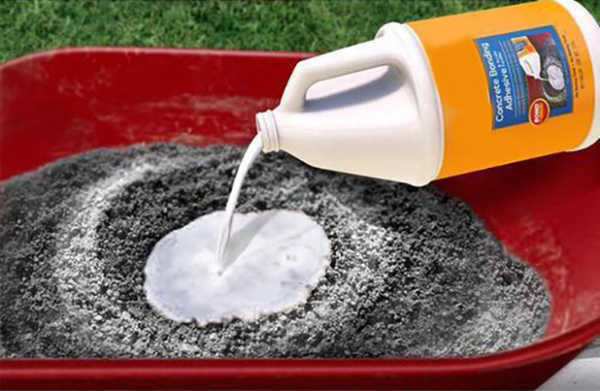
Concrete being the most popular material nowadays, it is used for numerous purpose under different site conditions. In some conditions, ordinary concrete fails to give the required quality performance or durability. In such situations, admixtures are used to modify the properties of ordinary concrete so as to match the requirement, thereby making it more suitable for the situation. Admixture is a material which is one of the ingredients of concrete apart from cement, water and aggregates. It is added to the batch immediately before or during mixing.
There are plenty of concrete admixtures available in the market. Gharpedia has listed down most of those chemicals and explained them in detail as well. You can have an idea regarding them from here,
Plasticizers (Water Reducers):
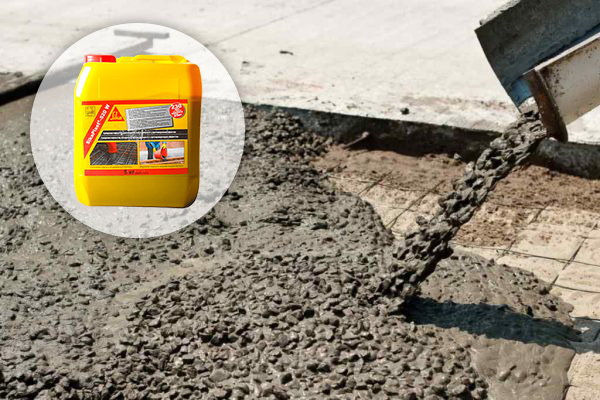
The organic substances or the combinations of organic and inorganic substances, which permit a reduction in water content for the given workability, or offer a higher workability at the same water content, are known as plasticizing admixtures. The benefits are considerable in both the cases. In the former, concretes are stronger and in the latter they are more workable.
The basic products constituting plasticizers are:(i) Anionic surfactants like lingo sulphonates, their modifications and derivatives, salts of sulphonates hydrocarbons.
(ii) Non-ionic surfactants such as poly glycol esters, acid of hydroxylated carboxylic acids and their modifications and derivatives.
(iii) Other materials such as carbohydrates etc.
The function of plasticizers is essentially to fluidify the mix, decrease the friction between particles and to improve the workability of concrete, grout or mortar. One of the common chemicals generally used is Lignosulphonic acid. It is used either in the form of its calcium or sodium salt. We have written a detailed article on plasticizer. Click below to read.
Super Plasticizers:
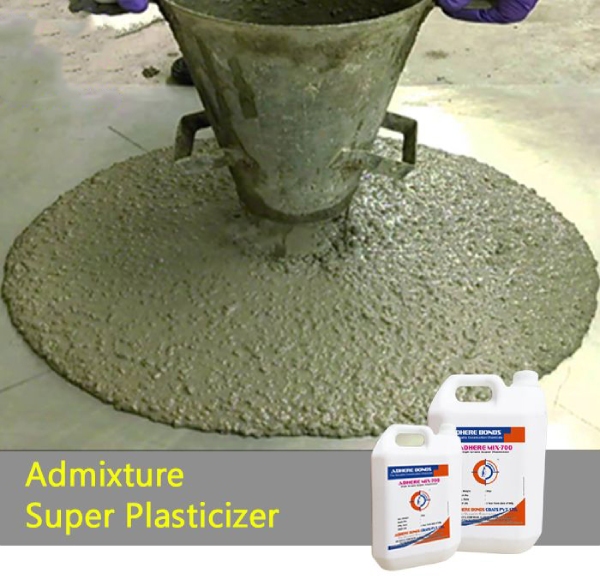
Superplasticizers are a new category and a modified version of plasticizer. They are chemically distinct from normal plasticizers. Use of superplasticizers allows the reduction of water to the extent up to 30 % without reducing workability in contrast to the possible reduction up to 15 percent in case of plasticizers. Superplasticizer is used for the production of easy flowing, self levelling, self compacting concrete and for the production of high strength and high performance concrete. They are called High Range Water Reducers in American literature. If you would like to know in detail, please visit our blog,
Retarders and Retarding Plasticizers:
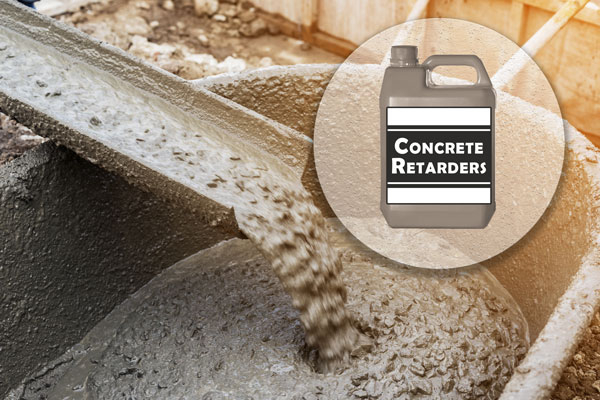
Retarders are admixtures that slow down the chemical process of hydration so that concrete remains in the plastic state and it remains workable for a longer time than concrete without the retarder. Retarders are used to overcome the accelerating effect of high temperature on setting properties of concrete in hot weather concreting. These retarders are also used in casting and consolidating large number of pours without the formation of cold joints.
Retarding admixtures are sometimes used to obtain exposed aggregate look in concrete. The most commonly known retarder is calcium sulphate. There are lot of other materials found to be suitable for this purpose. They are – starches, cellulose products, sugars, acids or salts of acids. If you really want to dive deep into this subject & want to have in-depth information regarding its mechanism, uses, pros and cons etc, you may please click on the link below.
Many times retardation of setting time offered by admixtures will not be sufficient. Thus, retarders are mixed with plasticizers or superplasticizers at the time of production instead of adding them separately. Such chemical is known as retarding plasticizers or retarding superplasticizers. Retarding plasticizers or superplasticizers are an important category of admixtures which are frequently used in the Ready mixed concrete industry for the various purposes like – retaining the slump loss, during high temperature, long transportation, to avoid construction or cold joints, slip form construction and for regulation of heat of hydration.
Accelerators and Accelerating Plasticizers:
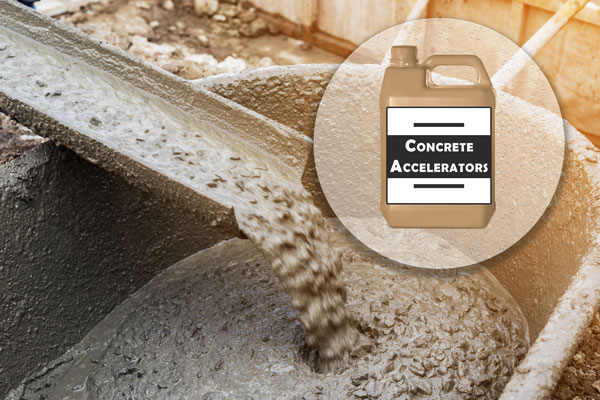
Accelerating admixtures are added in the concrete to increase the rate of early strength development in concrete so as to:
1) Permit earlier removal of formwork
2) Reduce the required period of curing
3) Advance the time that a structure can be placed in service
4) To a certain extent, compensate for the retarding effect of low temperature during cold weather concreting in the emergency repair work.Concrete accelerators play an important role in the construction, and hence it is essential for you to have knowledge regarding the same. Here’s Gharpedia offering you the solution. Click on the link below and read.
Certain ingredients are added to accelerate the development of strength of concrete. Such accelerating superplasticizers when added to concrete result in faster development of strength. The accelerating materials added to plasticizers or superplasticizers are triethenolamine chlorides, calcium nutrite, nitrates, fluosilicate etc.
Air-entraining Admixtures:
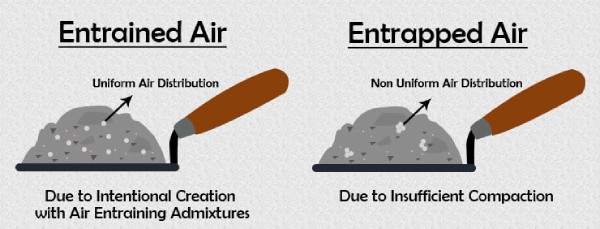
Air entrained concrete is made by mixing a small quantity of air entraining agent or by using air entraining cement. These air entraining agents incorporate millions of non-coalescing air bubbles which will act as flexible ball bearings and modify the properties of plastic concrete like workability, segregation, bleeding and finishing quality as well. It also modifies the properties of hardened concrete such as resistance to frost action and permeability.
Are you interested in knowing in detail how air-entraining admixtures modify the properties of concrete? Then you are precisely at the right place! Do visit our blog given below.
Pozzolanic or Mineral Admixtures:

It has been sufficiently experimented and proved that the best pozzuolana in optimum proportions when mixed with Portland cement improves qualities of concrete, and is advantageous in many ways such as:
(a) It lowers the heat of hydration and thermal shrinkage;
(b) It increases the water tightness;
(c) Reduces the alkali-aggregate reaction;
(d) Improves resistance to attack by sulphate in soils and seawater;
(e) Lowers susceptibility to dissolution and leaching;
(f) Improves workability;
(g) Lower costs.
Natural Pozzuolana consists of Clay and Shales, Opalinc Cherts, Diatomaceous Earth, Volcanic Tuffs and Pumicites. Artificial Pozzuolana consists of Fly ash, Blast Furnace Slag, Silica Fume, Rice Husk ash, Metakaoline, Surkhi. We have also explained all these Pozzolanic or Mineral Admixtures in detail.
Pozzolanic or Mineral Admixtures! Eco-Friendly and Inexpensive Cementing Material
Pozzolanic Materials: Eco Friendly Substitute of Cement Ingredients
Damp-proofing and Waterproofing Admixtures:
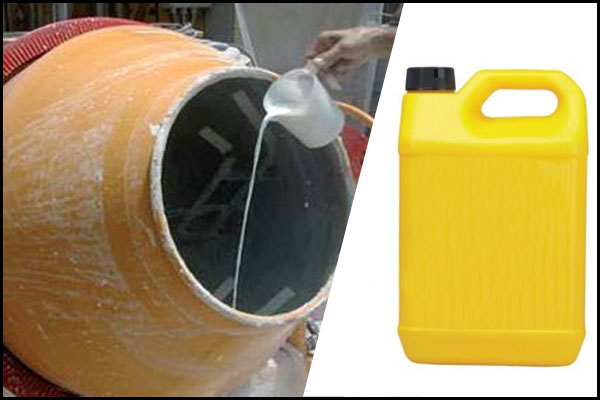
Waterproofing admixtures can be obtained in powder, paste or liquid form. It consists of pore filling or water repellent materials. The chief materials in the pore filling class are silicate of soda, aluminium and zinc sulphates these are chemically active pore fillers. In addition, they also accelerate the setting time of concrete and thus render the concrete more impervious at early stage. The chemically inactive pore filling materials are chalk, fullers earth and talc. These materials are normally very finely ground. Their chief action is to modify the workability, to facilitate the reduction of water for given workability and to make dense concrete which is basically impervious.
Some materials like soda, potash soaps, calcium soaps, resin, vegetable oils, fats, waxes and coal tar residues are added as water repelling materials in this group of admixtures. In some kind of waterproofing admixtures, inorganic salts of fatty acids, usually calcium or ammonium stearate or oleate are added along with lime and calcium chloride.
Gas Forming Admixtures:
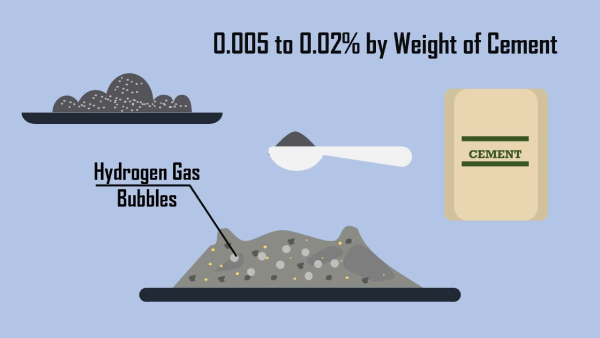
A gas forming agent is a chemical admixture i.e. aluminium powder. It reacts with the hydroxide produced in the hydration of cement to produce minute bubbles of hydrogen gas throughout the matrix. Normally unpolished aluminium powder is preferred. The action of aluminium powder, when properly controlled causes a slight expansion in plastic concrete or mortar. This reduces or eliminates the settlement and can accordingly, increase the bond to reinforcing bars and improve the effectiveness of grout in filling joints.
Air-detraining Agents:
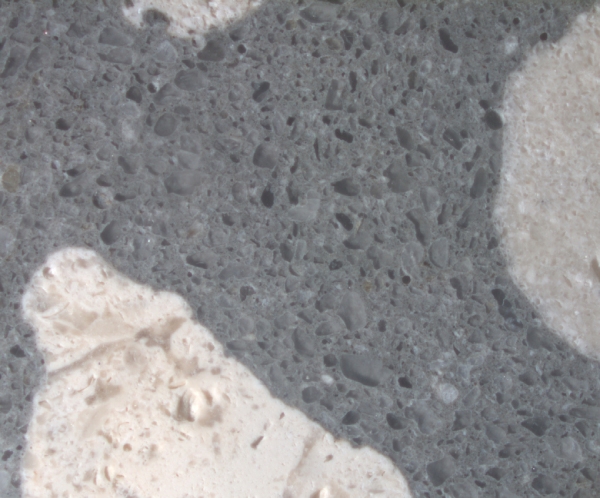
There have been cases where aggregates have released gas into plastic concrete or caused excessive air entrainment in it which made it necessary to use an admixture capable of dissipating the excess of air or other gas. Air-detraining agent is also helpful in removing a part of the entrained air from the concrete mixture. Compounds such as tributyl phosphate, water-insoluble alcohols and silicones have been proposed for this purpose. However, tributyl phosphate is the most widely and commonly used air-detraining agent.
Alkali-Aggregate Expansion Inhibiting Admixtures:
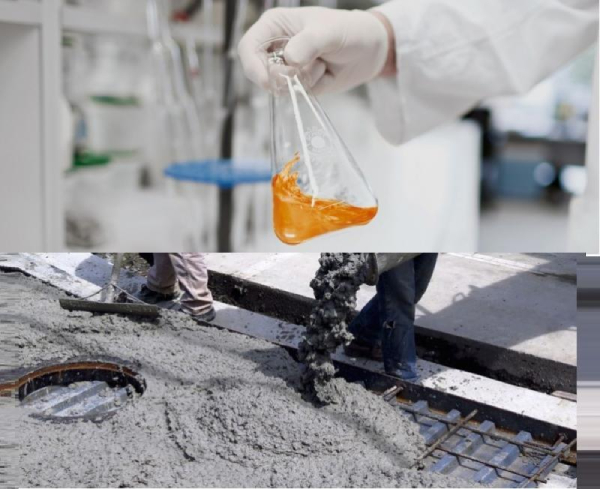
It has been observed that alkali-aggregate reaction can be reduced by using the pozzolanic admixture. Some evidences available also support the fact that air entraining admixture reduces the alkali-aggregate reaction slightly. Aluminium powder and lithium salts are the optional admixtures available which can also be used to reduce the alkali-aggregate reaction.
Workability Admixtures:
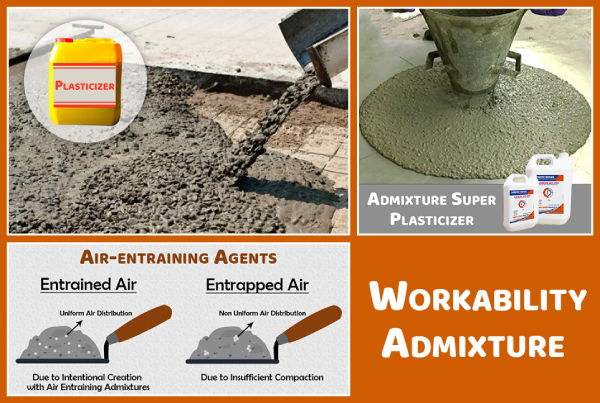
Some admixtures can be used to improve workability. The materials used as workability agents are:
(a) Finely divided material,
(b) Plasticizers and superplasticizers,
(c) air-entraining agentsThe use of finely divided admixture in appropriate quantity improves workability, reduces rate and amount of bleeding and increases the strength of lean concrete. In addition to that, it also lowers water requirement and drying shrinkage. Common materials added as workability agents are bentonite clay, diatomaceous earth, fly ash, finely divided silica, hydrated lime and talc. Use of plasticizers and superplasticizers are the most commonly methods adopted for improving the workability in almost all the situations in concrete making practices.
Grouting Admixtures:
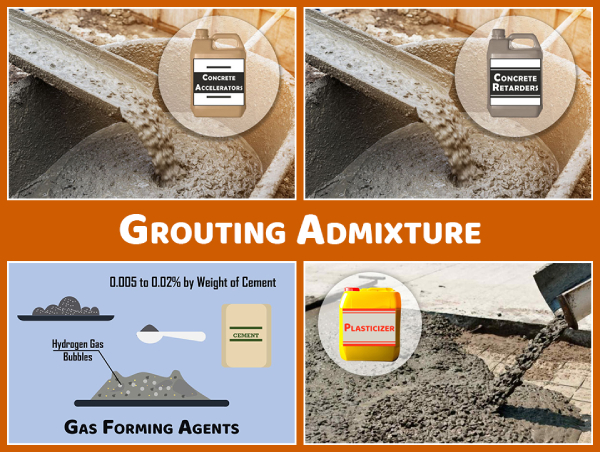
Grouting under different conditions, or for different purposes, would require different grout-mixing qualities. Often grout mixtures need to be rapidly set and sometimes grout mixtures need to be in fluid form for a long period of time so they can flow through all the cavities and fissures. Admixtures used for grouting are: Accelerators, Retarders, Gas forming agents, Workability agents, Plasticizers.
Aluminium powder is the most commonly used agent, which reacts chemically and forms small bubbles of hydrogen thereby letting the grout to expand. This expansion eliminates settlement and shrinkage. Plasticizers and superplasticizers in powder form is one of the mandatory ingredients of the grout mixture for effective flowability and attaining high durability.
Corrosion Inhibiting Admixtures:

It is found that calcium lignosulphonate decreases the rate of corrosion of steel embedded in the concrete when the steel reinforcement in concrete is subjected to alternating or direct current. Sodium nitrate and calcium nitrite have found to be efficient inhibitors of corrosion of steel in autoclaved products. It has been observed that nearly two to three per cent of sodium nitrate to the weight of cement serves the purpose. There are number of commercial admixtures available nowadays to inhibit corrosion.
Bonding Admixtures:
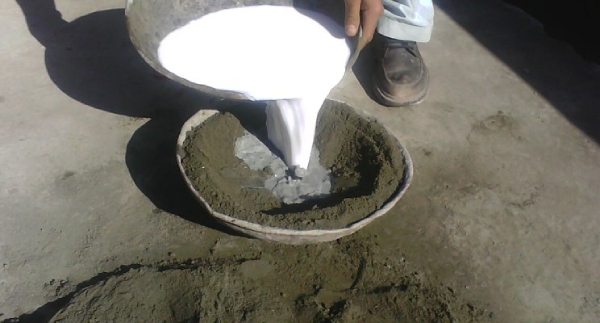
Bonding admixtures are water emulsions of several organic materials that are mixed with cement or mortar grout for applying on an old concrete surface just prior to patching with mortar or concrete. Sometimes they are mixed with the topping or patching material. Their function is to increase and intensify the bond strength between the old and new concrete. The commonly used bonding admixtures are made from natural rubber, synthetic rubber or from any organic polymers. The polymers include polyvinyl chloride, polyvinyl acetate etc.
Fungicidal, Germicidal and Insecticidal Admixtures:
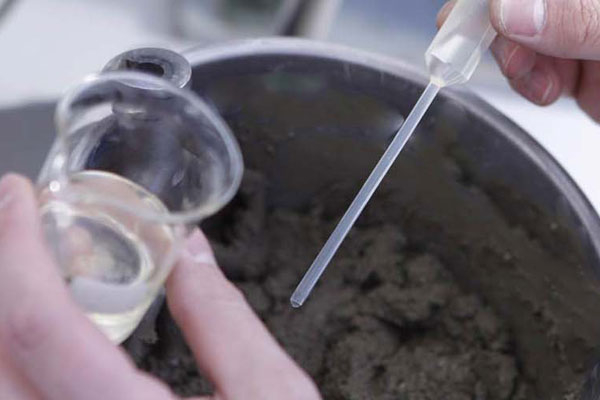
It has been suggested that certain materials can be merged along with the cement or added as admixtures to impart fungicidal, germicidal or insecticidal properties to the hardened cement pastes, mortars or concretes. Such materials are polyhalogenated phenols, dieldren emulsion or copper compounds.
Colouring Agents:

Pigments are often added to produce colour in the finished concrete. The requirements of suitable admixtures include (a) colour fastness when exposed to sunlight (b) chemical stability in the presence of alkalinity produced in the set cement (c) no adverse effect on setting time or strength development (d) it has to be anti corrosive. Various metallic oxides and mineral pigments are used in colouring agents. Preferably, the pigments should be mixed thoroughly or inter ground with the dry cement. They can also be mixed with dry concrete mixtures before adding water into it.
There are some other chemicals added to the concrete or used in concrete related activities in the field of construction which may not serve the purpose of admixtures, but they are added to simply enhance the performance of concrete. Such chemicals are known as construction chemicals or building chemicals. The following is the list of some of the construction chemicals commonly used.
02. Concrete Curing Compounds
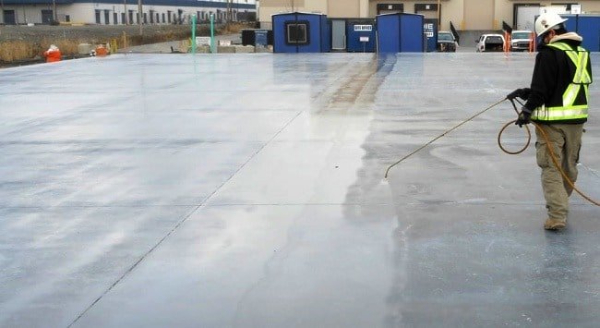
Liquid membrane forming curing compounds are used to retard the loss of water from concrete during the early period of setting and hardening. They are used not only for curing fresh concrete, but also for further curing of concrete after removal of formwork or after initial water curing for one or two days. The white pigmented curing compound performs the function of reducing the temperature rise in concrete exposed to the radiation from sun. Curing compounds are made of Synthetic resin, Wax, Acrylic, Chlorinated rubber. Resin and wax based curing compounds seals the concrete surface effectively. Acrylic based membrane forming curing compound has the additional advantage of having better adhesion of subsequent plaster. Chlorinated rubber curing compounds not only form a thin film that protects the concrete from drying out, but also fill the minute pores on the surface of concrete.
03. Polymer Bonding Agents
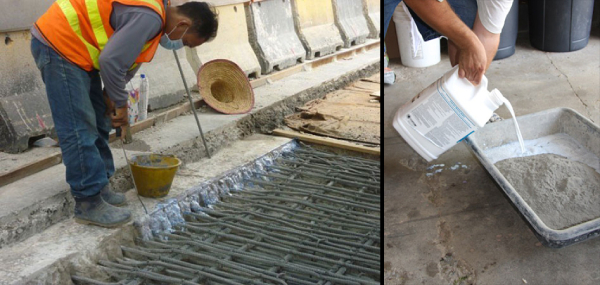
The bonding characteristics can be significantly modified by two ways. First is, by providing a bond coat between old and new concrete surface and the second is, by mixing the bonding agent with the new concrete or mortar. The use of bonding agents noticeably improves the adhesion of new concrete or mortar to old surface. The mixing of bonding agents with concrete or mortar improves the workability even at lower water cement ratio and thereby reduces the shrinkage property. It also helps in water retention in concrete and reduces the chances of early drying. It further improves the water- proofing quality of the treated surface.
According to ‘Neville’[01] (Author of Concrete Technology), concrete bonding agents are polymer emulsions which improve the adherence of fresh concrete to hardened concrete, and thus are particularly suited for repair work. The emulsion is a colloidal suspension of a polymer in water and, when the emulsion is used to combine concrete with a polymer, a latex-modified concrete or a polymer Portland cement concrete is produced. Although expensive, polymer latexes improve the tensile and flexural strength. They also enhance the durability as well as the bonding properties.
You can get specific information regarding concrete bonding agent from the link given below.
04. Polymer Modified Mortar for Repair and Maintenance
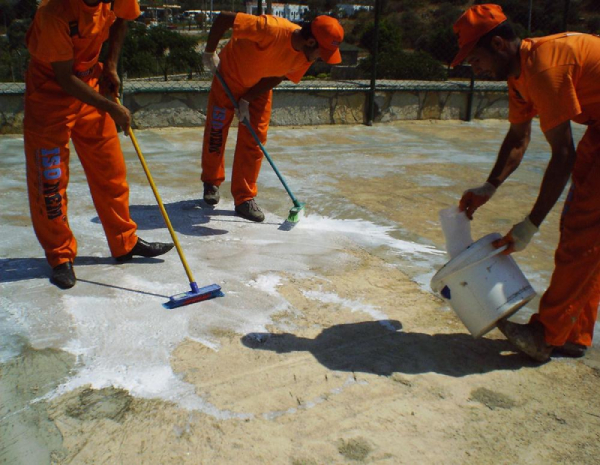
Sometime concrete surfaces and concrete matrix requires repair. The ceiling of concrete roof can get peeled off, the edge of a concrete column can get chipped off; or a concrete floor can get pitted with the passage of time. For effective repair in such cases, there are many types of repair materials available, mostly polymer modified. They adhere very firmly to the old concrete surface on account of greatly improved bond properties. These materials are generally stronger than the parent materials. They are also admixed with some other repair materials which make them set and harden very quickly. Sometime the material added eliminates the requirement for curing.
05. Mould Releasing Agent
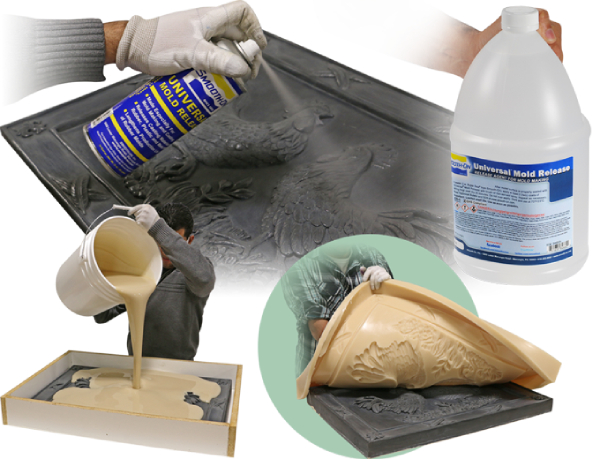
Wooden planks, ordinary plywood, shuttering plywood, steel plates etc. are used as shuttering materials. Concrete when set and hardened, adhere to the surface of the formwork and it becomes difficult to demould. This affects the life and quality of shuttering materials and that of the concrete as well. At times when extra force is used to demould the formwork, concrete gets affix to the formwork and ultimately everything is damaged. Sometimes mould surface could be having old cement plaster on it, in which case the demoulding or stripping of concrete member becomes all the more difficult. To reduce the bond between formwork and concrete, specially formulated mould releasing agents, different for different absorptive surfaces like timber and plywood and for nonabsorbent surface like steel sheet are available and used.
06. Protective and Decorative Coatings
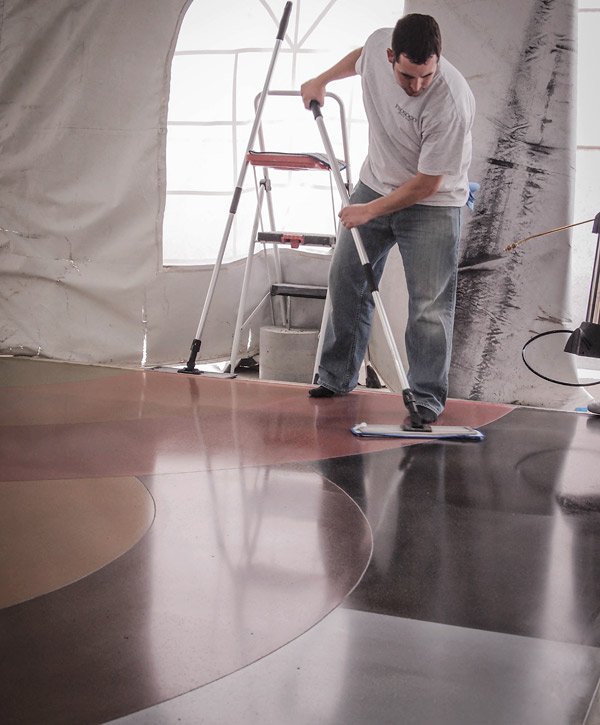
Concrete needs protection and maintenance to increase its durability in hostile environment. Corrosion is also accelerated by carbonation. Reinforced concrete members like, louvers, sun breakers, facia, sun shades, facades and chajjas, crack and spall off after few years, especially when the cover provided to these thin and delicate members are insufficient. To enhance the durability of these members and to make them waterproof acrylic based waterproof, carbonation resistant coating is given. Incidentally, it also gives an aesthetic and decorative look. There is a range of such protective, waterproof decorative paints, based on acrylic polymer and selected mineral filler available in the market.
07. Installation Aids
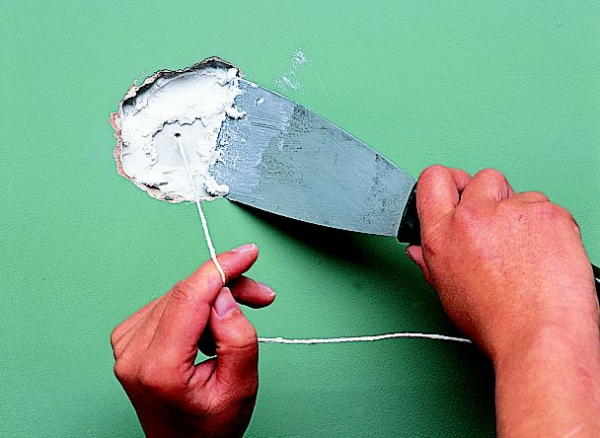
Many times we leave holes or make holes in walls, staircases, gate pillars etc. for fixing washbasin, geysers, swing hooks, lampshades, handrails or gates etc. Invariably, the holes made or kept are larger than required. The extra space is required to be plugged subsequently. Material used in the past for this purpose was cement mortar. But as a part of its limitation, cement mortar takes a long time to set and harden. Moreover, it remains vulnerable to damage and it also shrinks. Therefore, these days we have specially manufactured materials which hardens fast within 10-15 minutes, sustain the given load and work as an ideal material from all points of view for the purpose of fixing such installations. They can also be used for fitting of antennae, fixing of pipes and sanitary appliances etc.
08. Floor Hardeners and Dust-Proofers
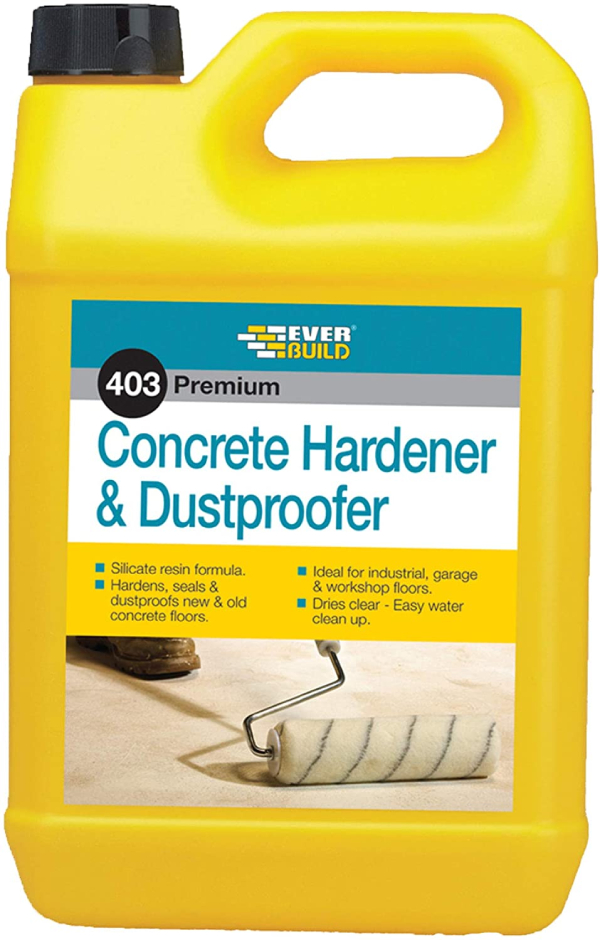
Floor is one of the parts of the building, particularly the industrial buildings which is continuously subjected to wear and tear. In the past, there were some active tough surface materials such as Ironite, Hardonite, Metarock and other liquid floor hardeners which were used. But performances of those materials were not found to be satisfactory. Nowadays we have new materials for floor toppings consisting of carborundum or emery powders, systematically graded, combined with refined and modified cement. This mixture when sprinkled over wet concrete floor of sufficient strength and depth is found to give an effective wear resistant, dust free, and nonslippery floor.
09. Non-shrink High Strength Grout

Grouting below base plate or machine foundations, grouting of foundation bolt holes in industrial structures, grouting of pre-stressed concrete duct, grouting in anchoring and rock bolting systems, grouting of curtain walls, grouting of fissured rocks below dam foundation, grouting the body of a newly constructed dam itself, grouting of deteriorated concrete or fire affected structures to strengthen and rehabilitate, grouting of oil wells are some of the few situations where grouting is resorted to. The grouting materials can be broadly classified into two categories. One is free flow grout which is meant for using in machine foundations, foundation bolts and fixing crane rails etc. The second category of grout is meant for injection grouting to fill up the small cracks which is normally done under pressure.
Non-shrink grout is useful to seal cracks where cracking shrinkage is expected. Such grouts are specially formulated and have a special mixture of cement, aggregates and other additives to make up for possible shrinkage, flowability and setting time considerations. Also non-shrink grouts are used for connecting concrete precast sections.
10. Surface Retarders for Exposed Aggregate Finish

One of the popular kinds of architectural concrete is Exposed aggregate finish. A few years back such an architectural concrete finish was achieved by bush hammering method or by wire brushing and water sprays methods. But the above old methods did not give a desired finish. Now with the availability of surface retarders, both for “face up” or “face down” application, a very pleasing exposed aggregate finish can be obtained. Often exposed aggregate finish can be given for prefabricated panels or for in-situ concrete. The use of different coloured aggregates will further improve the attractiveness of the exposed aggregate.
11. Bond Aid for Plastering
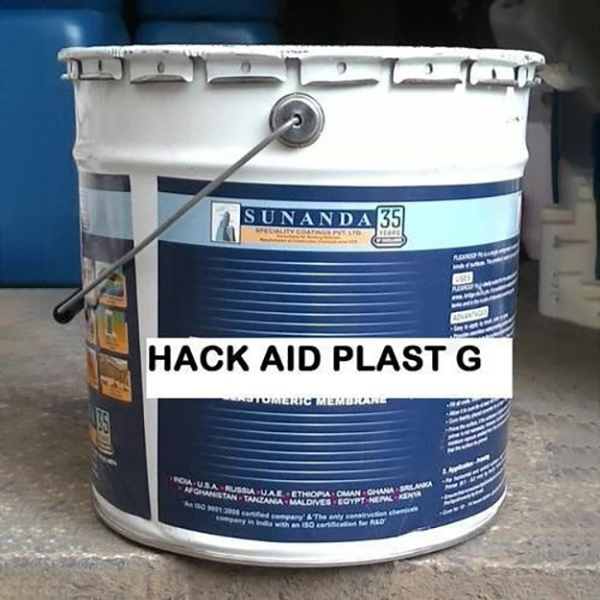
In the conventional system of construction, on removing the formwork, hacking is done on the surface of columns and beams and also on the ceiling of roof to form a key between the RCC structure and plaster. But, mentioned below are some concerns associated with Hacking:
01. Uniform hacking is difficult to achieve.
02. If there is delay, the structural concrete becomes so hard that hacking become difficult.
03. Manual hacking is time consuming particularly at ceiling and labour intensive.
04. Slender members like louvers, cantilever chajjas, sun breakers cause structural cracks because of inconsiderate heavy hammer blows on freshly laid concrete.
Usage of the liquid polymer bond in “ready to use” form helps to obviate the above problems.
12. Ready to Use Plaster
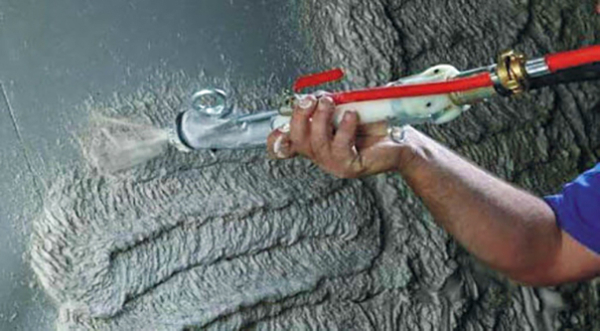
Ready mixed plaster is basically a pre-mixed material in dry form consisting of good sand and cement in different proportions for various usage. The mix also includes bonding agents, water retention and workability agents like hydrated lime, air-entraining agents, fly ash and other suitable admixtures to enhance the performance of plaster material. It is claimed that ‘ready to use’ plaster exhibit the following benefits.
01. There is consistency in quality and finish
02. Requires less storage and mixing area
03. Less material consumption
04. Crack-free plaster
05. No curing
06. Better adhesion and workability
07. Minimal wastage.
13. Waterproofing Chemicals
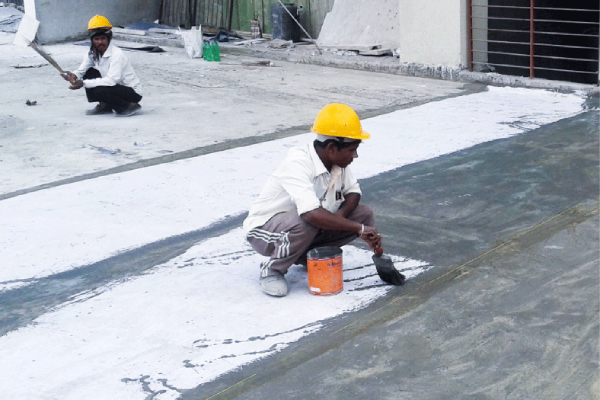
Such chemicals are used when there is water leakage in the house. Waterproofing chemicals are applied to the structural elements of the building to stop water from leaking with an intention to prevent the structure from further damage. They are generally used where water is often in contact with structure. In building you need waterproofing at following places:
- Terrace including parapet walls
- Overhead & underground water tanks
- Open terrace – Balconies
- Toilet – wash areas
- Basement, peripherals walls and bottom slabs
- Chhajas
- Construction & expansion joints along walls, slabs etc.
Various construction chemicals used for water proofing are as follows.
- Integral Water-proofing Compounds
- Membrane Forming Coatings
- Polymer Modified Mineral Slurry Coatings
- Protective and Decorative Coatings
- Chemical DPC
- Silicon Based Water-repellent Material
- Waterproofing Adhesive for Tiles, Marble and Granite
- Injection Grout for Cracks
- Joint Sealants
Thus, summing up the whole thing in few words, construction chemicals have virtually played significant roles in all kinds of construction projects – be it industrial, residential or commercial construction projects etc. These chemicals are also used in several project components to achieve waterproofing and enhance various important aspects like strength, durability, workability etc. These chemicals are therefore indispensable in the field of construction.
Must Read
Tile Adhesive & Its Various Types
Tile Grout: Know Its Functions & Types
Image Courtesy: Image 4, Image 9, Image 10, Image 11, Image 12, Image 16, Image 17, Image 18, Image 21, Image 22, Image 23, Image 24, Image 25, Image 26, Image 27, Image 28, Image 30








































